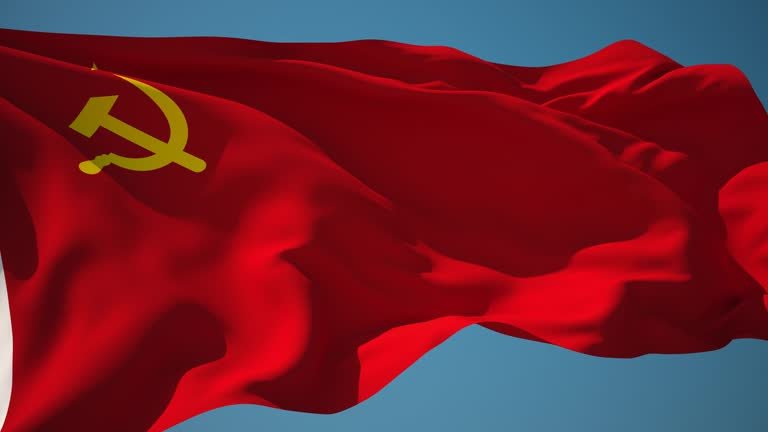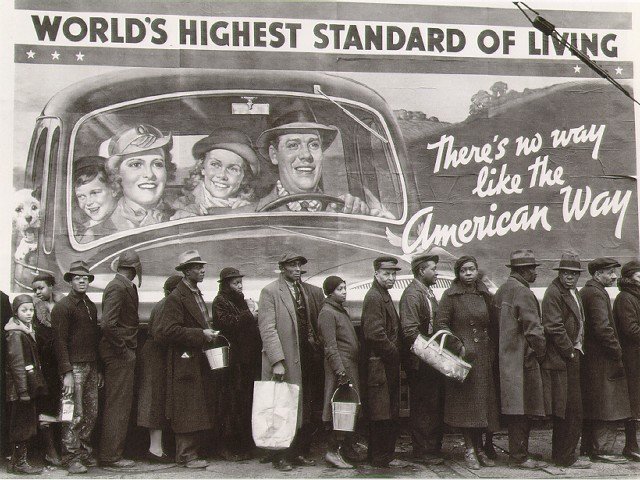
The time is NOW for service workers to organize!
Despite the rise of domestic worker militancy in recent years, too many service workers remain confused. Like hikers on a mountain who strip naked amidst the delirium of hyperthermia, disorganized workers abandon their greatest weapons against the ruling class: (1) correct organizing tactics, (2) strong political leadership, and (3) Revolutionary Democratic Control by the Working Class.

How a Planned Economy Will Solve “Resource Scarcity”
We produce enough food globally to feed every single human being. Yet, hundreds of millions of people experience food insecurity. In the United States, there are nearly sixteen million vacant homes. But 650,000 people experience homelessness. Additionally, millions go without adequate medical care – but we have enough doctors. The data is clear. The resources themselves are not scarce. Yet the inability to access resources essential for survival is a major source of suffering. Why is it that so many people are going without – and what is to be done about it?

The Fall of US Capitalism and the Victory of Socialism, Part II
Revolutionary struggle does not manifest in a single instance of outrage by the masses. Revolutionary struggle is a dialectical process – the exploited class gradually builds its strength, while at the same time it degrades the strength of the ruling exploiter class. These small quantitative changes in the relative power of the two opposing classes, over time, lead to a qualitative change — the victory of the exploited and the destruction of the exploiter.

Mutual Aid and Class Struggle
Societies provide for all of their members by collecting surplus and redistributing it. Workers create surplus by applying their labor power to the means of production. However, this surplus is stolen by capitalists for private use and can not be adequately redistributed as long as capitalists maintain their control.

What Is Imperialism?
If we are to truly understand our current world — and indeed if we are to change it — we must wield a precise definition of “imperialism.”

Palestinian Liberation and the Tasks of US Labor
Israel’s ongoing genocide of the Palestinian people in Gaza has shocked the world. This genocide is only possible through the provisioning of arms, ammunition, and funding from the US capitalist empire. Without US capitalist backing, the regime would collapse quickly, as apartheid South Africa did some thirty years ago. So where is the US working class?

The Fall of US Capitalism and the Victory of Socialism, Part I
Dialectics is the study of change. It is the study of birth, growth, and death. When an object, organism, or system grows to maturity, it begins to decay. Capitalism is no different. All economic systems are finite. They are brought into being and when they no longer serve the needs of society, they are dismantled.

The Revolutionary Struggle in the US
The creation of what is known today as the United States of America is steeped in myth and legend. Those who are subject to schooling in the US are taught that the colonization of what would become ‘America’ began as an attempt by everyday Europeans to flee “religious persecution” or a quest to find opportunity. We are also told that these newcomers were welcomed with open arms, at least initially, by the peoples already inhabiting what would come to be known as New England. Decades on, it is said that the “Founding Fathers” shrugged off the oppressive British Crown in order to secure such noble principles as “freedom” and “liberty”. Nothing could be farther from the truth.

Capitalism and Women's Exploitation
In capitalist society, workers are exploited by the ruling capitalist class. But exploitation of workers is not the only form that exploitation takes; there are other particular forms of exploitation. For example, the exploitation of Black and Indigenous people by white colonizers through chattel slavery and genocide, which facilitated further exploitation, creating an underclass within the underclass.
Another very prominent kind of exploitation is gender-based exploitation, which in our current era exists in the form of patriarchy, which is then further shaped by the conditions of capitalism. While patriarchy is harmful to all people, it involves and is facilitated primarily by the oppression of women. Women’s exploitation contributes to the power of the capitalist class; therefore, the liberation of women and the end of gender-based exploitation of all kinds is a necessary component of socialism.

Strikes and Seizing the Means of Production
The capitalist state — the police, military, courts, and associated legal scaffolding — allows individuals to privately own the resources that are used by the society to produce its needs. Under capitalism, production is social but ownership is private. This ownership of the means of production is the source of capitalist power. The strike is the first weapon at the disposal of the working class to break that power.

Capitalism and the Black Working Class
Why do we center the Black working class in our revolutionary struggle? It is because of the acute and historic exploitation of Black people in the US and because of their revolutionary history in struggling against this oppression.

The Dialectics of Organizing and Mobilization
A revolution, among other things, is a series of mass mobilizations, continuing on until the quantity of mobilizations creates a qualitative change in societal power relations. A revolution is the collective action of an entire class. How do we get an entire class to move?

Your Boss is Ripping You Off
The class struggle is nothing more and nothing less than the fight between capitalists and workers over their respective share of the wealth that workers created — the fight between the leech and the host over the share of the host's blood.

Workers Must Take Power
A better society, even a livable one, cannot exist as long as the capitalist regime is in power. But how can we defeat capitalism and what do we build in its place?



If We’re Going to Defeat Capitalism, We Need to Build a Working Class Base – Right Now
What is the purpose of a communist party? For much of the Western left, the answer to that question has become abstract. Day-to-day political work generally consists of raising consciousness through political writings (only read by other leftists), responding to the crises faced by the working class with political demonstrations (only attended by other leftists), or developing survival programs (which can only collect and redistribute the meager resources of the oppressed). The notion of the victory of the working class over the capitalist ruling class is but a hazy object on the distant horizon. Instead, leftists have come to admire struggle for struggle’s sake, divorced from the attainment of any long-term objective.